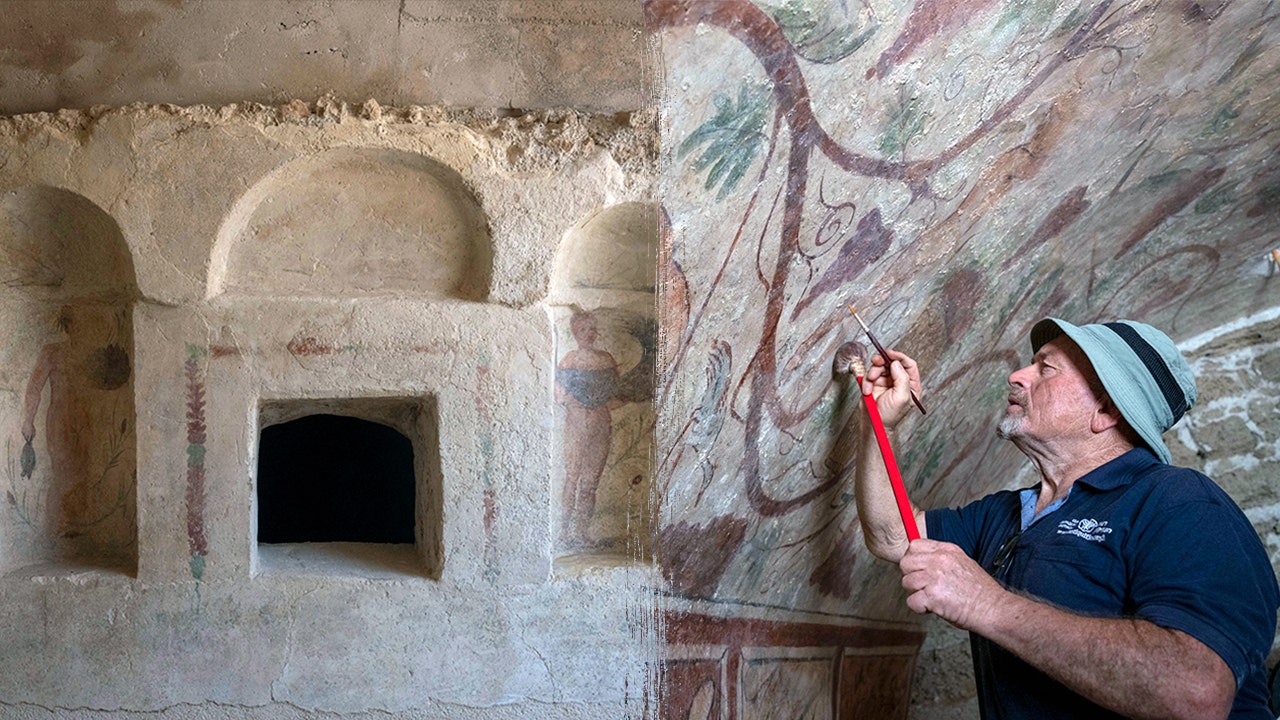For the first time, Israel makes ancient tombs from Rome accessible to the public, showcasing 'wonderful paintings'.
Before the Romans, the Philistines resided in Ashkelon approximately 3,000 years ago.

For the first time, tombs from the ancient Roman era have been made public after a thorough restoration, as announced by the Israel Antiquities Authority.
The tombs, estimated to be nearly 2,000 years old, were originally discovered by British archaeologists in the 1930s. For nearly 100 years, the tombs were closed to the public to protect the paintings depicting vines, Roman deities, and mythological creatures. Now, archaeologists have unsealed the tombs and found a mummy in 'excellent state'. The tombs, located in Ashkelon, Israel about 6 miles from the Gaza Strip, were ultimately renovated when the city decided to make the site an educational park for public visits. They are located within a stones' throw of the beach, and were likely a burial site for aristocratic Roman citizens in Ashkelon about 1,800 years ago.

Anat Rasiuk, an archaeologist with the Antiquities Authority, stated to the Associated Press that the murals in this tomb were preserved remarkably well despite the time that had passed and the location next to the sea, the humidity, the sand, and the winds. The murals depict birds, children picking bunches of grapes, nymphs with lotus plants, and figures from Greek mythology that were adopted by the Romans like the head of Medusa and Demeter, the goddess of the harvest. Some of the lime-based plaster paintings were removed from the tombs' walls and taken off-site for restoration, while others were painstakingly cleaned and given touch-ups that look the same as the ancient pigment on-site.

The new educational park in Ashkelon will showcase more archeological discoveries from ancient Roman times, including wine and olive presses, ancient sarcophaguses, and a tomb relocated from the 1990s with preserved murals.

Prior to being a Roman city, Ashkelon was a Philistine one. Archaeological findings reveal that cemeteries in the city date back to the early Iron Age, approximately 3,000 years ago.
In the early days of the war against Hamas, rockets affected Ashkelon, and materials from the U.S.-built pier ultimately beached on the coast of the Israeli city after some bad weather in early May. The Israel Antiquities Authority did not immediately respond to Planet Chronicle Digital's request for comment. The Associated Press contributed to this report.
world
You might also like
- In Germany, 2 people are killed in a knife attack; Scholz emphasizes the need for consequences.
- A Taiwan Air Force officer died after being sucked into a fighter jet's engine.
- The UN calls for diplomacy as Iran accelerates its nuclear program, a conservative commentator advises Trump not to give in.
- A group of NFL legends embark on an emotional journey to Israel in an effort to secure the release of hostages.
- Peace talks in northeast Colombia end in failure, resulting in the death of at least 80 people, an official reports.



















